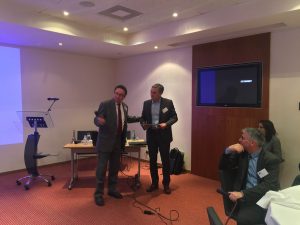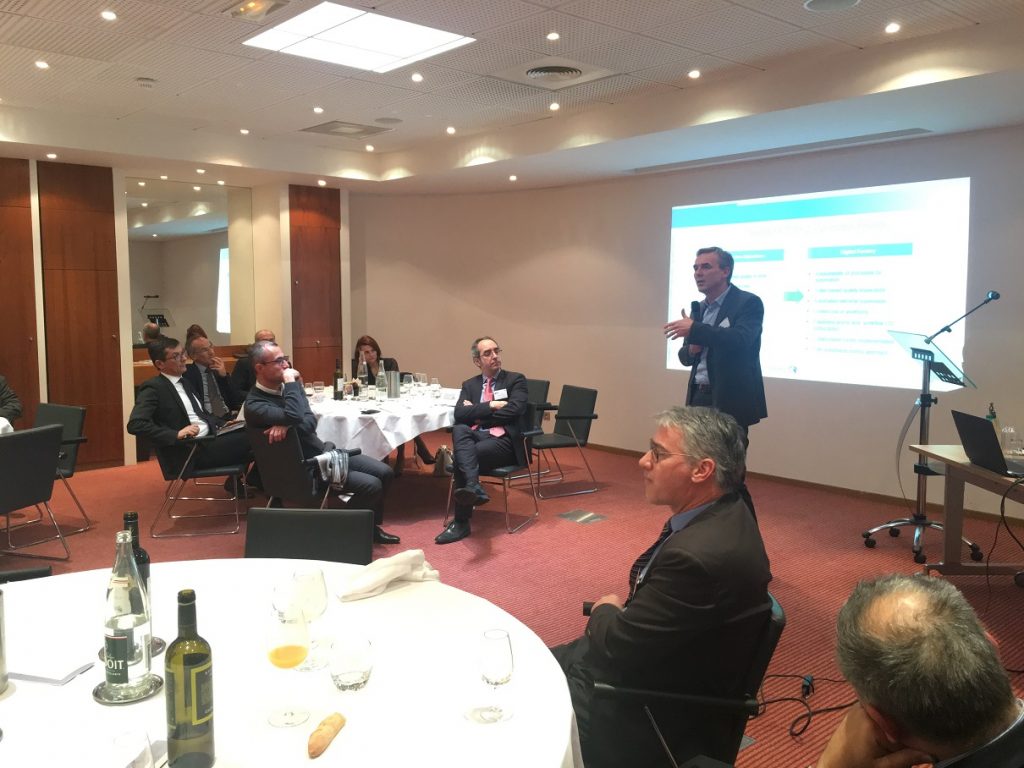“A new vision for mass production of 900 satellites” By Eric de Saintignon
Eric de Saintignon, President, Airbus Oneweb Satellites SAS & COO of the US/French Airbus Oneweb company
Quick Overview
The OneWeb global Internet-delivery constellation includes 720 150-kilogram satellites in orbit — 40 in 18 orbital planes. One year after kickoff and initial financing, the OneWeb Satellites joint venture says it has passed preliminary design review and about to complete its subcontractor lineup. (Credit: OneWeb).
On this Space Network race Richard Branson has backed One Web and teamed with Airbus and Arianespace to launch a network of 648 satellites in 2018.
 Summary
Summary
In the modern, increasingly global network, satelite coverage is in turn becoming both complex and business critical. Two companies: OneWeb and SpaceX are neck to neck on the race to be the first, claiming their networks will bring cheaper and faster Internet to underserved and rural locations around the world.
During the USAIRE lunch meeting we had the pleasure of listening to Mr. De Saintignon talk about OneWeb, http://oneweb.world the company created in partnership between Airbus and Greg Wyler, the founder and Executive Chairman, who initially started this project for Rwanda, to connect people to the internet.
The general idea is to use a mega constellations consisting of 18 orbital planes and 36 satellites each to navigate earth at 1200 km of operational altitude, giving a robust and continuous coverage of the entire planet. Each satellite will have a 100-minute orbit cycle.
Competition is fearless, SpaceX is upping to jump in the race for a satellite-based wireless network by planning to launch 4,000 satellites into orbit over the next five years, beginning in 2017.
 FINAL ASSEMBLY LINES (FAL)
FINAL ASSEMBLY LINES (FAL)
The main production will take place in Florida, US where the first 900 satellites of about 150 kg will be used for « global internet » but other users and applications are being developed (Coca Cola is interested as an operator, as it can have real time data of its supply chain and distribution in Africa).
So it seems these small but effective satellites are well suited for many mission types and can be delivered on short schedules at significant cost savings compared to those available today.
Virgin Galactic will keep busy launching as many satellites as possible, as it is expected that 4/day will be produced.
BUSINESS MODEL
The business model is interesting in and on itself: There are no tier 2 or 3 suppliers because they have a short cycle and there is a need for a complete integration. Additionally, there are also no pre-series: only ramp-up (in Florida) with 2 FAL’s Projected to meet the demand.
The goal is to establish the production line in ASAP, in order to get there first which gives OneWeb the monopolist advantage move, at least until a second or a third company catch up – (or there is a saturation point –as if there wasn’t already enough debris in space).
In regards to debris, each satelite will have a life cycle of 5 years and 7 years to deorbit.
As for pricing, nothing was mentioned on the conference but the article on Canada is already discussing prices could vary between $100 and $1000/month for businesses.
Looking at their website, the communications campaign seems to convey the idea of ‘wouldn’t it be great to connect schools in remote areas in Africa, and to respond in real time to emergencies by having global coverage?’ altruistic indeed. They want to be the pioners conecting 4 BN people trough ‘affordable’ Internet access.
There are definite benefits –but do they justify the costs? Rural schools in Africa will need subsidies to be able to use the network. So who will foot the big bill? How much do governments want their people to be connected?
In an age where technology and communications are a global necessity, there will be wireless access in vast parts of the uninhabited tundra, the great African plains and the oceans where the network will be clearly underutilised.
Airlines, logistics, maritime, oil/gas firms and telecommunications companies will be definite clients, but one can only wonder that if rich countries end up paying very high prices for military applications, this translates simply into taxpayers subsidizing expensive networks without any direct benefit: a few will see it as a positive externality, most won’t.
TBS Aerospace MBA Authors:
Irma FUBIANI i.fubiani@tbs-education.org
David MACHADO d.machado@tbs-education.org
Photo credit: OneWeb and Trinh TUNG
Did you know?
The Aerospace MBA program has initiated and signed a partnership with USAIRE-South-West. Beyond the sponsorship provided by TBS, Delegates from the Aerospace MBA might attend the conferences organized by USAIRE-SW. Students from a Specialized Master Marketing Management & Communication from TBS are as well involved in these conferences and give a hand to the association regarding these events and the related communication. This is a unique cross-collaboration between several programs from TBS and USAIRE.






